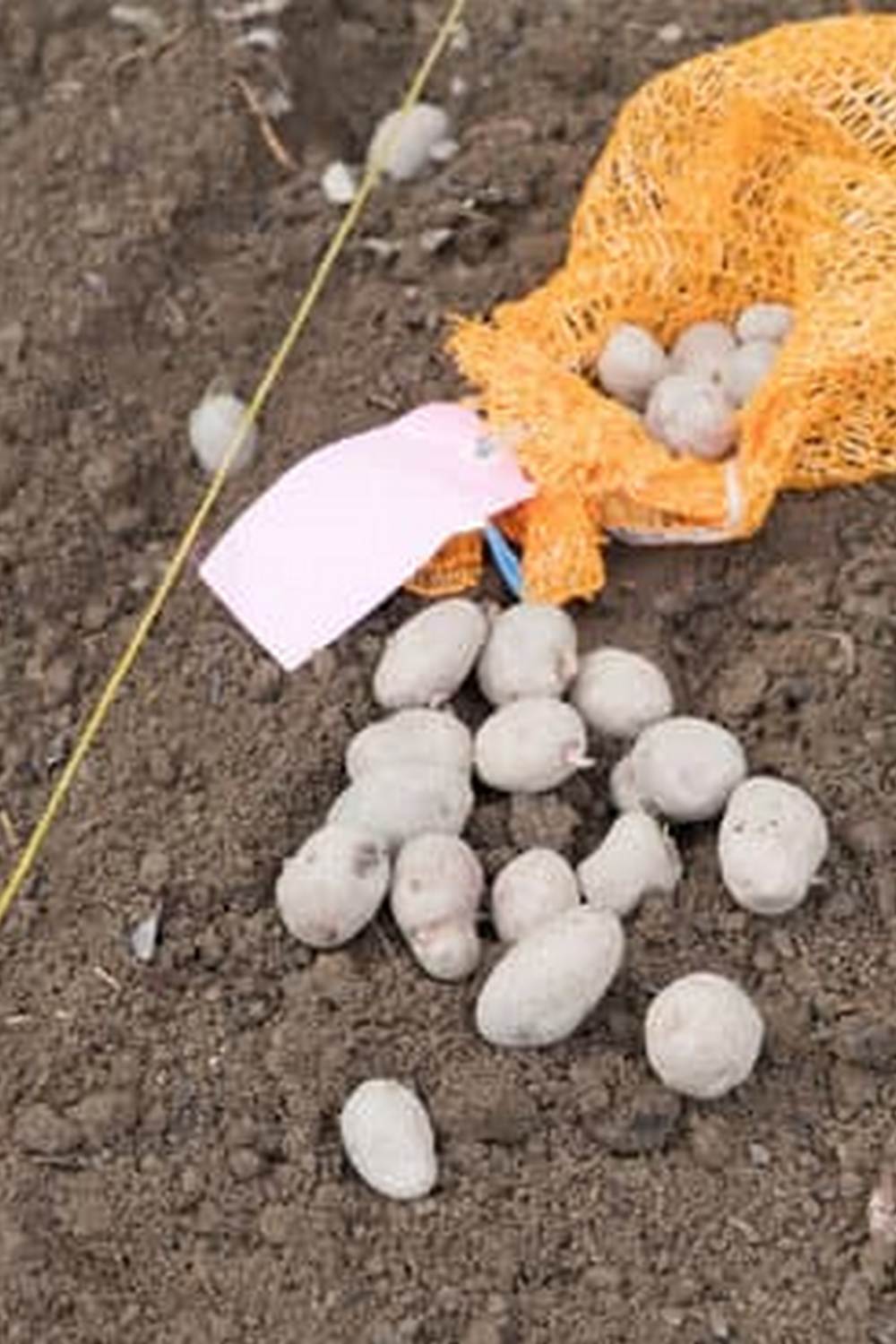Are you looking to take your vegetable garden to the next level? One way to enhance the growth, flavor, and overall health of your crops is through complementary planting. In this article, we will explore the concept of complementary plants for vegetable gardens and how they can benefit your garden’s ecosystem.
Complementary planting involves strategically pairing different plants in close proximity based on their mutually beneficial relationships. By understanding the interactions between plants and leveraging these natural alliances, gardeners can improve soil fertility, attract beneficial insects, repel pests, and optimize space utilization.
In the following sections, we will delve into the importance of companion plants in vegetable gardens and how they contribute to improved growth and yield. We will also discuss specific plant relationships such as trap cropping, masking scents, providing nutrients, and identifying best complementary plants for popular vegetables like tomatoes.
Additionally, we will explore interplanting techniques for space optimization and tips for creating a well-balanced garden ecosystem. With this knowledge in hand, you’ll be better equipped to create a thriving vegetable garden that goes beyond just growing produce.
Importance of Companion Plants
Companion planting is a gardening practice that involves planting different types of plants together to achieve specific benefits. When it comes to vegetable gardens, complementary plants play a crucial role in improving growth and yield. By understanding the importance of companion plants, gardeners can create a more productive and resilient garden ecosystem.
One of the key benefits of using complementary plants for vegetable gardens is their ability to attract beneficial insects. For example, planting flowers like marigolds or herbs like dill and parsley can attract pollinators such as bees and butterflies, which are essential for the successful pollination of many vegetable crops. Additionally, certain companion plants can also attract natural predators that help control pests, reducing the need for chemical pesticides.
Another important aspect of companion planting is its role in improving soil health. Plants have different root structures and nutrient needs, so by interplanting vegetables with complementary plants, gardeners can optimize the use of resources in the soil. For example, legumes like peas and beans have nitrogen-fixing abilities that enrich the soil with nitrogen, benefiting neighboring vegetables such as tomatoes and peppers.
Moreover, certain companion plants help create a well-balanced garden ecosystem by providing protection against pests and diseases. For instance, aromatic herbs like basil and thyme can mask the scent of nearby vegetables from pests, while flowers like nasturtiums can act as trap crops, luring destructive insects away from valuable vegetable crops.
| Benefits of Companion Plants | Examples |
|---|---|
| Attracting beneficial insects | Marigolds, dill, parsley |
| Improving soil health | Legumes (peas, beans) |
| Protecting against pests and diseases | Basil, thyme, nasturtiums |
Understanding Plant Relationships
Complementary planting in vegetable gardens involves understanding the different types of plant relationships and how they can benefit the overall health and yield of your crops. By strategically choosing companion plants that support each other, gardeners can create a more resilient and productive garden ecosystem.
There are several types of plant relationships that can be utilized in complementary planting. Trap cropping involves planting certain species to attract pests away from main crops, effectively protecting the vegetables from insect damage. For example, planting marigolds alongside tomatoes can help trap nematodes, protecting the tomato plants from root damage.
Additionally, masking scents involve using aromatic plants to mask the scent of vegetables, making it harder for pests to locate their host plants. Finally, providing nutrients through companion planting involves selecting plants that enhance the soil quality or fix nitrogen, ultimately benefiting neighboring vegetables.
Some common examples of complementary plants for vegetable gardens include:
- Planting basil with tomatoes to improve the flavor and growth of the tomatoes while repelling pests such as aphids and hornworms.
- Interplanting radishes with carrots to deter root maggots that typically attack carrot roots.
- Growing beans alongside corn to provide nitrogen fixation for the corn while also discouraging pests like corn earworms.
Understanding these different types of plant relationships is essential for successful complementary planting in vegetable gardens. By carefully selecting companion plants based on these relationships, gardeners can create a more diverse and balanced garden ecosystem that promotes healthy growth and higher yields for their vegetables.
Best Complementary Plants for Tomato Gardens
When it comes to planting a successful vegetable garden, understanding the concept of complementary planting is essential. Complementary plants are those that have positive effects on each other when grown in close proximity. These plants can help improve growth, flavor, and overall health of the vegetables they are paired with. In the case of tomato gardens, selecting the right complementary plants can make a significant difference in the quality and yield of the tomatoes.
Here are some specific plants that complement tomatoes and enhance their growth and flavor:
- Basil: Known for its strong aroma and natural pest-repelling properties, basil is an excellent companion plant for tomatoes. It helps repel insects that commonly affect tomatoes, such as aphids and tomato hornworms.
- Marigold: This colorful flower not only adds beauty to the garden but also serves as a natural deterrent for nematodes, which can damage tomato roots. Planting marigolds around tomato plants can help protect them from these harmful pests.
- Nasturtium: These vibrant flowers not only add visual interest to the garden but also attract aphids away from tomato plants. By serving as a trap crop, nasturtiums can help protect tomatoes from aphid infestations.
Incorporating these complementary plants into a tomato garden not only enhances the overall aesthetics of the garden but also contributes to healthier and more flavorful tomatoes. Additionally, by choosing the right companion plants, gardeners can create a well-balanced ecosystem that promotes natural pest control and improves soil health. By carefully selecting complementary plants for vegetable gardens, including those specifically beneficial to tomato gardens, gardeners can maximize their harvest and enjoy delicious homegrown produce throughout the season.
Companion Plants for Pest Control
When planning a vegetable garden, it’s essential to consider the benefits of incorporating complementary plants for pest control. Companion planting is a gardening practice that involves growing different plants together to achieve specific benefits, such as repelling pests and protecting vegetables from insect damage. By understanding the relationships between certain plants, gardeners can create a natural pest management system that reduces the need for chemical interventions.
One of the key advantages of companion planting for pest control is the ability to repel harmful insects using plants with strong scents or natural deterrent properties. For example, planting aromatic herbs like basil and mint alongside vegetables can help deter common pests such as aphids, mosquitoes, and beetles. Additionally, certain flowering plants like marigolds are known for their ability to repel nematodes in the soil, providing protection for root vegetables and other susceptible crops.
Another important aspect of companion planting for pest control is the concept of trap cropping, which involves planting specific species to attract pests away from valuable vegetable crops. For instance, planting nasturtiums can lure aphids away from other plants by serving as a more appealing food source. By sacrificing a small portion of the garden space to trap crops, gardeners can protect their main vegetable plants from insect infestations.
Moreover, some companion plants provide nutrients or natural substances that support the growth and health of neighboring vegetables while deterring pests. For example, growing nitrogen-fixing legumes like peas and beans next to heavy-feeding crops such as tomatoes can help improve soil fertility and reduce the risk of nutrient deficiencies. This approach contributes to overall plant resilience and minimizes susceptibility to pest-related stress factors.
| Companion Plant | Pest Repelled |
|---|---|
| Basil | Aphids |
| Mint | Mosquitoes |
| Marigolds | Nematodes |
| Nasturtiums | Aphids |
Interplanting for Space Optimization
Understanding Interplanting
Interplanting is a gardening technique that involves planting different types of crops in the same area to maximize space and improve soil health. This method allows gardeners to make the most out of limited garden space by utilizing the vertical and horizontal spaces available. By interplanting complementary plants for vegetable gardens, gardeners can also enhance the overall health and productivity of their crops.
Benefits of Interplanting
One of the main benefits of interplanting is its ability to create a diverse ecosystem within the vegetable garden. When plants with different root structures and nutrient needs are planted together, they can help prevent soil depletion and erosion. Additionally, certain plant combinations can also promote natural pest control and reduce the need for chemical interventions.
Selecting Complementary Plants for Interplanting
When practicing interplanting in vegetable gardens, it’s important to select complementary plants that support one another’s growth. For example, planting nitrogen-fixing legumes alongside heavy-feeding vegetables like tomatoes can help replenish the soil with essential nutrients. Similarly, pairing aromatic herbs with susceptible vegetables can help mask scents and confuse pests, thus reducing pest damage.
By implementing interplanting techniques and selecting suitable companion plants, gardeners can optimize their garden space while promoting healthy soil and enhancing the overall productivity of their vegetable gardens.
Attracting Beneficial Insects
The Role of Pollinators in Vegetable Gardens
Pollinators play a crucial role in the growth and reproduction of many vegetables. Bees, butterflies, and other pollinating insects help transfer pollen from one flower to another, leading to the development of fruits and seeds. By attracting these beneficial insects to your garden, you can ensure a more abundant harvest of vegetables such as tomatoes, cucumbers, and squash.
Plants That Attract Pollinators
To attract pollinators to your vegetable garden, consider planting flowers and herbs that are known for their appeal to bees and butterflies. For example, bee balm, lavender, and sunflowers are popular choices for attracting pollinators. Herbs such as basil, thyme, and mint also produce flowers that can lure in beneficial insects. By adding these plants alongside your vegetable crops, you can create a beautiful and functional garden ecosystem.
Natural Predators of Garden Pests
In addition to attracting pollinators, it’s important to welcome natural predators of garden pests into your vegetable garden. Ladybugs, lacewings, and predatory wasps are just a few examples of insects that feed on common garden pests like aphids and caterpillars. Planting dill, fennel, or yarrow can help draw these beneficial predators to your garden while simultaneously adding visual interest with their foliage and flowers.
By understanding the importance of attracting beneficial insects like pollinators and natural pest predators to your vegetable garden, you can create a balanced ecosystem that supports the health and productivity of your crops. Incorporating these complementary plants alongside your vegetables will not only enhance the beauty of your garden but also contribute to its overall success.
Creating a Well-Balanced Garden
In conclusion, the practice of complementary planting offers numerous benefits for vegetable gardens, from improved growth and flavor to natural pest control and space optimization. By understanding the importance of companion plants and their specific roles in the garden ecosystem, gardeners can effectively enhance the health and productivity of their vegetable crops.
When it comes to selecting complementary plants for vegetable gardens, diversity is key. By choosing a variety of companion plants that serve different functions, such as repelling pests, attracting beneficial insects, or providing nutrients to the soil, gardeners can create a well-balanced garden ecosystem that supports the overall health of their vegetables. This diversity also helps to mimic a natural environment, promoting resilience and reducing the risk of pest or disease outbreaks.
In addition to traditional companion planting techniques, such as interplanting and trap cropping, it’s important for gardeners to consider the specific needs of their vegetable crops when selecting complementary plants. For example, certain vegetables may benefit from nitrogen-fixing plants or those that improve soil structure.
By carefully planning and incorporating a range of complementary plants into their gardens, growers can create thriving ecosystems that support healthy, high-yielding vegetable crops. Overall, understanding plant relationships and strategically choosing complementary plants is essential for creating successful and sustainable vegetable gardens.
Frequently Asked Questions
What Grows Well Together in a Vegetable Garden?
In a vegetable garden, certain plants grow well together due to their compatibility and ability to support each other’s growth. For example, planting basil near tomatoes can help repel pests that commonly affect tomato plants.
What Not to Plant Together in a Veggie Garden?
On the flip side, there are also plants that should not be planted together in a vegetable garden due to potential negative effects on growth and yield. For instance, planting potatoes near tomatoes can increase the risk of spreading blight diseases between the two crops.
What Plants Grow Well Together Chart?
A plants grow well together chart is a helpful resource for gardeners looking to maximize the success of their vegetable garden. This chart typically outlines which vegetables, herbs, and flowers are beneficial companions in the garden based on their compatibility and ability to support each other’s growth while deterring pests or diseases.

If you’re looking to get into vegetable gardening, or are just looking for some tips on how to make your current garden better, then you’ve come to the right place! My name is Ethel and I have been gardening for years. In this blog, I’m going to share with you some of my best tips on how to create a successful vegetable garden.





